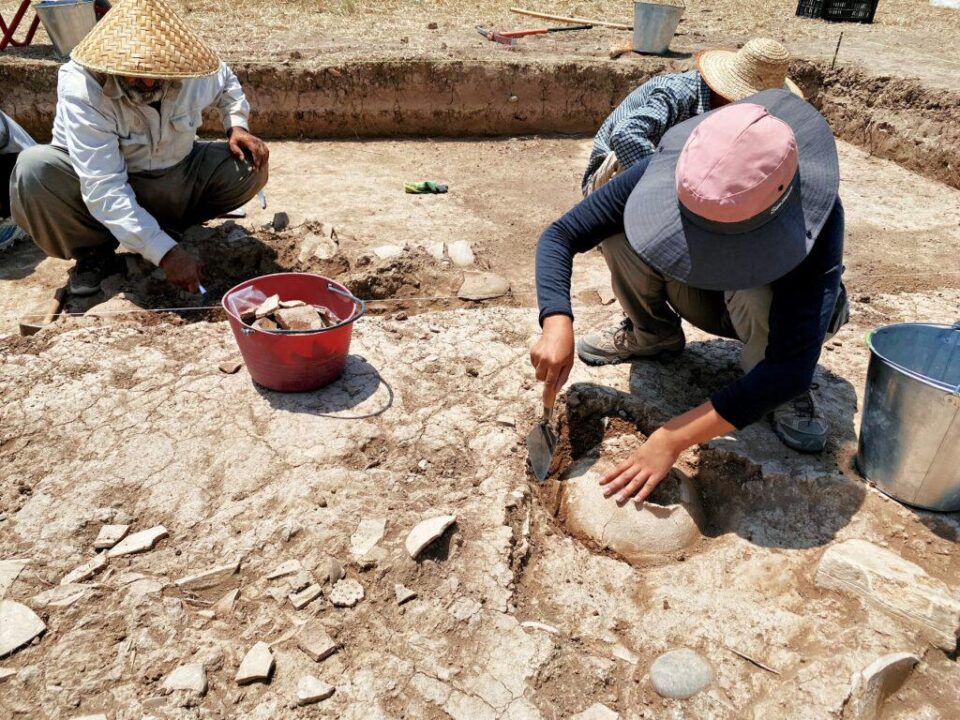Kurd Qaburstan represents the largest Bronze Age settlement discovered on the Erbil Plain in the Kurdistan region of Iraq, spanning an impressive 100 hectares. The site, which flourished around 1800 BC, offers crucial insights into ancient Mesopotamian urban development. Its strategic location between the Upper and Lower Zab rivers established it as a vital hub for trade, politics, and cultural exchange in northern Mesopotamia.
The site’s architecture features a central mound rising 20 meters above the plain, which was likely fortified during its peak period. A substantial city wall enclosed an extensive lower town, where archaeologists have uncovered evidence of monumental structures, including a palace and temple complex. Geophysical surveys and excavations indicate that the urban center was densely populated and organized into distinct neighborhoods.
Recent archaeological investigations, initially spearheaded by Johns Hopkins University and later by the University of Central Florida, have particularly focused on the residential areas. These studies have yielded rich findings of both fine and everyday pottery, suggesting sophisticated craft production and economic organization. The site’s material culture hints at a more complex social structure than previously assumed, with evidence of relative prosperity even among non-elite residents.
The settlement’s origins trace back to the late third millennium BC or earlier, though it didn’t achieve city status until around 1800 BC. Historical texts suggest that Kurd Qaburstan was likely the ancient city-state of Qabra, which played a significant role in regional politics and faced conflicts with powerful rulers like Shamshi-Adad I and Dadusha of Eshnunna. Despite its prominence during the Middle Bronze Age, the city’s influence eventually waned, with only the high mound showing evidence of continued occupation into the Late Bronze Age.
Research at the site began relatively recently, with its initial identification in 2012 by the Erbil Plain Archaeological Survey under Harvard University’s direction. This late discovery has actually benefited the research, as investigators have been able to employ modern archaeological methods and scientific techniques from the outset. Advanced geophysical surveys have revealed detailed urban planning, including street layouts and previously unknown monumental structures, such as a second palace on the high mound.
The site has yielded surprising insights into ancient urban life. Excavations in residential areas have uncovered well-preserved courtyards, middens rich with artifacts, and evidence of food preparation. Analysis of animal bones suggests that residents enjoyed a varied diet, including both domesticated and wild meat, challenging previous assumptions about stark divisions between elite and non-elite lifestyles in ancient Mesopotamian cities.
Current research, supported by the National Science Foundation and affiliated with ASOR, continues to uncover new details about early urbanism and social organization. The project employs non-destructive survey techniques, such as magnetometry and ground-penetrating radar, allowing researchers to map buried structures while preserving the site’s integrity. These ongoing investigations not only provide valuable insights into daily life in the ancient Middle East but also help ensure the preservation of this significant archaeological site for future study.
The combination of historical significance, well-preserved remains, and modern research methods makes Kurd Qaburstan an invaluable resource for understanding the development and organization of early Mesopotamian cities.
By Muaiyad Ahmed

